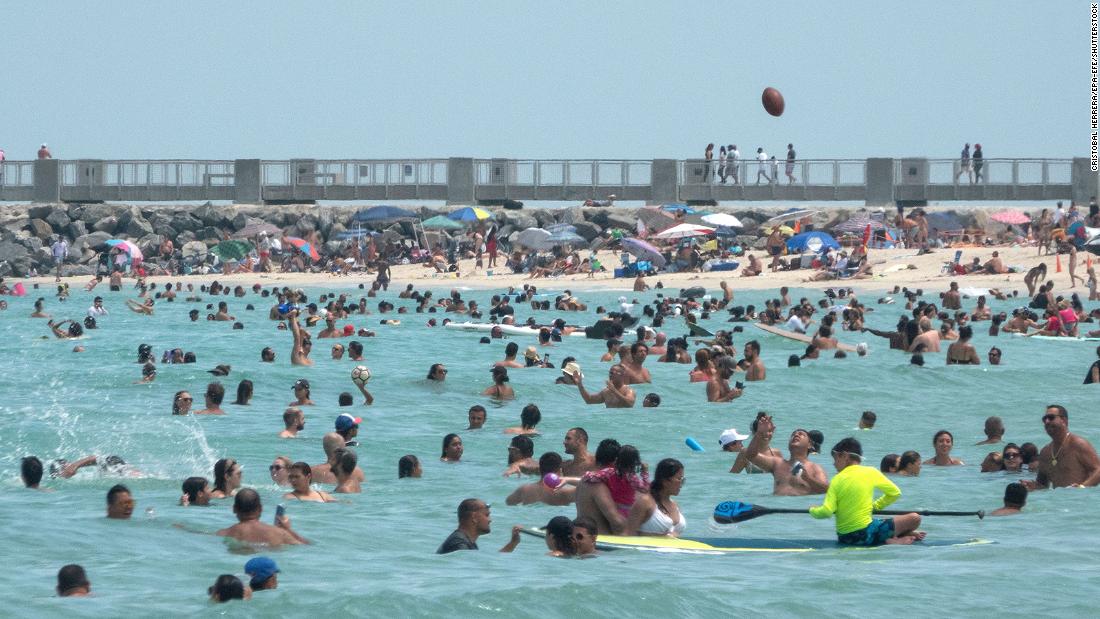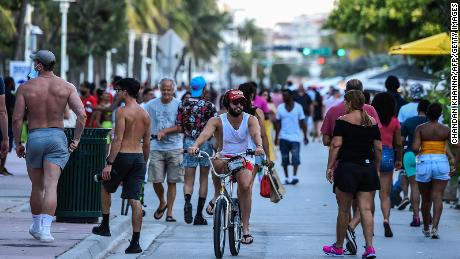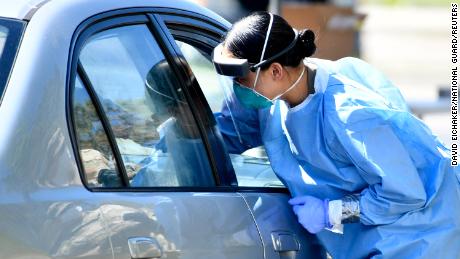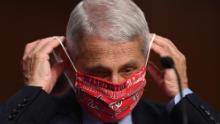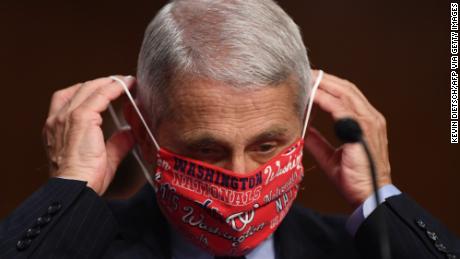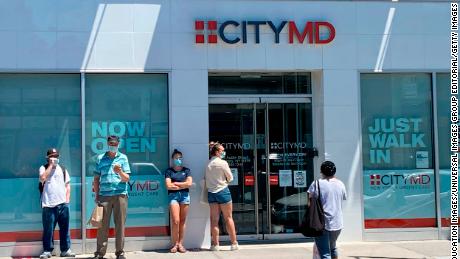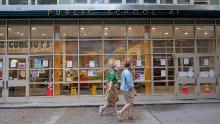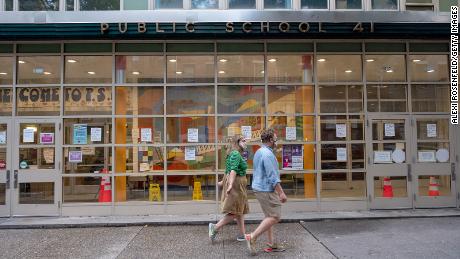Miami is now the virus epicenter, expert says
“What we were seeing in Wuhan — six months ago, five months ago — now we are there,” Lilian Abbo, with the Jackson Health System said during a press conference hosted by the Miami-Dade County mayor.
In the past 13 days, Miami-Dade County has seen staggering increases in the number of Covid-19 patients being hospitalized (68%), in the number of ICU beds being used (69%) and in the use of ventilators (109%), according to the latest data released by Miami-Dade County Government.
“We need your help as media communicators to help the community understand that we’re just not repeating the same thing over and over just to give you trouble, we really need your help,” Abbo said, directing the comments to reporters.
The plea echos the requests from some other leaders in the state and across the country who have seen new cases spike in the past weeks as Americans flocked back outside following weeks-long lockdowns.
When states began lifting restrictions, images quickly emerged of pool parties, packed beaches, reopened bars and holiday celebrations with no social distancing or face masks. Health officials warned then of what they’re now reporting: clusters that are often traced back to Americans who didn’t heed to reopening guidelines weeks ago.
More than 3.3 million people have now tested positive nationwide — but the true number of infections could be much higher, experts have said, as at least 40% of those who contract the virus show no symptoms, according to a new estimate by the US Centers for Disease Control and Prevention.
With no way to control the rapid spread of the virus and with thousands possibly infecting others unknowingly, both local and state officials have been forced to rethink more restrictions and in some cases, possibly a second round of lockdowns.
In Houston, where hospitals are already overwhelmed with patients and hitting ICU capacity, Mayor Sylvester Turner said Monday he proposed a two-week shutdown to the governor following a surge of cases.
“I do think we are going to need to shut down for a period of time. I am proposing two weeks, or at the very minimum, to return to phase one,” Turner said. “We need to reset, especially in light of the fact that next month, you know, kids, we are talking about returning to school.”
More than half of US states have now halted or rolled back their reopening plans in hopes of preventing further spread. The end of the pandemic is nowhere near in sight, the country’s leading infectious disease expert said Monday, but that doesn’t have to mean a new wave of shutdowns — as long as communities follow the rules.
“You don’t necessarily need to shut down again, but pull back a bit. And then, proceed in a very prudent way, observing the guidelines of going from step to step,” Dr. Anthony Fauci said during a webinar with the Stanford School of Medicine on Monday.
States reimpose restrictions
Amid an uptick in cases, at least three states announced restrictions Monday, including California, New Mexico and Oregon.
California Gov. Gavin Newsom said indoor activities at restaurants, bars, wineries, tasting rooms, movie theaters, family entertainment centers, zoos, and museums should shut down.
The 30 counties that are on the state’s watch list will need to close indoor operations for fitness centers, places of worship, offices for non-critical sectors, personal care services, hair salons and barbershops and malls, the governor said.
In New Mexico, which has recorded at least 20% of its total infections in the past two weeks, an order from the governor puts in place restrictions on indoor seating at restaurants and breweries once again in response to more cases.
Restaurants and breweries can seat people outside at 50% capacity and may continue to operate take out and delivery services. The new orders also tighten restrictions on gyms and other businesses including tattoo parlors and salons.
“Unfortunately, our state’s dramatically rising case numbers reflect that those behavior modifications and precautions have either not been taken seriously or taken up by enough people,” Gov. Michelle Lujan Grisham said in a statement.
And Oregon Gov. Kate Brown also took new measures Monday, expanding face covering requirements and prohibiting indoor gatherings of more than 10 people. “Either people will adhere to this requirement and be a positive force for stopping Covid-19, or I will be forced to take more restrictive measures,” the governor said.
Expert: Wear masks or watch economy go ‘to hell’
As cases climb, experts are also dialing up their calls for Americans to take precautions — and wear face masks. But more than two dozen states don’t have a statewide mask mandate.
“You have a choice,” Dr. George Rutherford, a professor at the University of California, San Francisco, said. “You can be locked down as the economy goes to hell, or you can wear a mask.”
Delays in testing results
The surging US cases are also causing a delay in test results from the country’s laboratories, according to Quest Diagnostics, a leading provider of diagnostic services.
“Soaring demand” for a Covid-19 molecular test is “slowing the time” it takes the company to provide test results even after rapidly scaling up its capacity, Quest said Monday.
The company can perform up to 125,000 molecular diagnostic tests a day, almost double its capacity two months ago and expects to have the capacity for 150,000 tests a day by the end of July.
But despite the increasing capacity, Quest said it’s taking up to a day to process test results for priority cases, including hospital patients, pre-operative patients in acute care settings and symptomatic healthcare workers.
In all other cases, those test results take an average of seven or more days.
There are multiple challenges to ramping up testing even further, the company said, adding it can’t reduce turnaround time on results as long as cases are spiking.
More school districts announce they’re going virtual
The President has already said he’s pressuring governors to reopen schools and Florida’s department of education said earlier this month it was requiring schools to reopen in August despite its surge of cases. On Monday, Florida Gov. Ron DeSantis said he thinks parents “should have the option” of whether or not to send their kids back to school.
California’s two largest schools districts announced Monday students will continue learning remotely when classes start next month.
In New York City, Mayor Bill de Blasio offered options for partial in-person instruction in the fall. But the state’s governor said Monday in order for in-person class to be allowed, a region must be in Phase 4 of reopening, which New York City is not.
CNN’s Artemis Moshtaghian, Stephanie Elam, Raja Razek, Sarah Moon, Shelby Lin Erdman, Konstantin Toropin contributed to this report.
![]()


